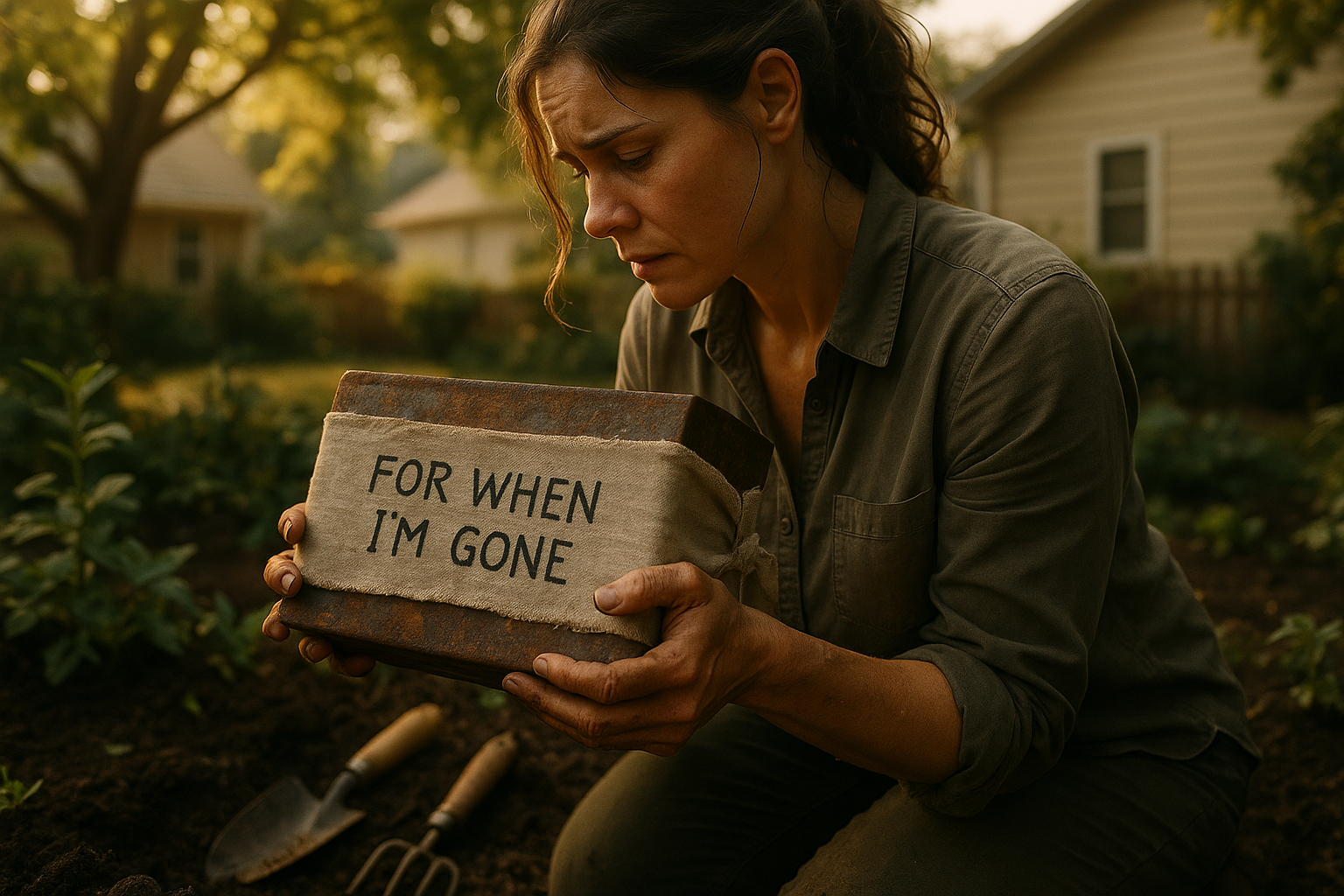I’d been in my mother’s house in Columbus, Ohio, for a week after her funeral, sorting through her belongings. She had always been private, even with me. A single mother, fiercely independent, she worked as a nurse for decades and never spoke much about her own past.
The garden was the last place I thought I’d find anything unusual. But that morning, pulling weeds near the oak tree, my trowel hit metal. The box was about the size of a shoebox, heavy, wrapped in a piece of linen tied with string.
On the linen were the words: “For when I’m gone.”
I opened it slowly. Inside was a neatly folded letter, a faded photograph of a man I’d never seen before… and a leather wallet. Inside the wallet was an Ohio driver’s license — issued in 1979 — for a man named David Carter.

The problem? I recognized the address on the license. It was my mother’s house.
And David Carter had been reported missing in July 1980.
My hands shook as I dialed 911. The operator listened in silence as I explained what I’d found. Within an hour, two patrol cars and a plainclothes detective were at the house.
They opened the box fully and found more: two old bus tickets to Cincinnati, a set of military dog tags, and — wrapped separately — a gold wedding band engraved with the initials D.C. & M.L..
The detective told me this could be related to one of Columbus’s oldest cold cases. David Carter had been a Vietnam veteran and a factory worker who disappeared without a trace. His wife, Marlene, was questioned but never charged.

Marlene was my mother’s maiden name.
Over the next two weeks, I answered dozens of questions. My mother had never told me about David, never mentioned being married before my father. Through property records, they confirmed she had lived with him until the summer of 1980.
The shocking twist? He hadn’t been murdered.
Records showed that David Carter had been arrested in Texas under a different name in 1983 for theft, served time, and disappeared again after release. The wallet, tickets, and ring? He had apparently left them behind before fleeing the state — and my mother had hidden them, refusing to speak about it to anyone.
Why? According to the letter in the box, she wanted me to know the truth one day but didn’t want me to grow up thinking she’d been married to “a man who ran from everything.”
The police officially closed the cold case file. The “disappearance” had been solved.
As for the photo of the man, I still keep it. His eyes look tired, almost sad. I don’t know where David Carter is today, if he’s even alive. But my mother’s words at the end of her letter stay with me:
“Some things we bury not to hide them, but to protect the ones we love until they’re ready to know.”
A true story. A police investigation. A decades-old mystery solved — by a rusted box in a garden.

